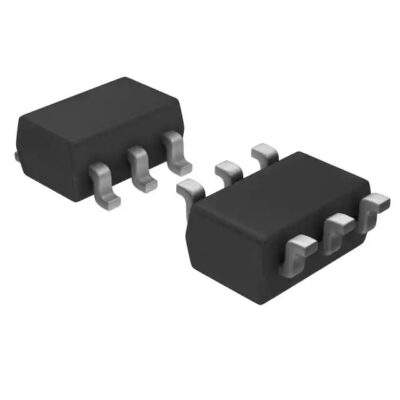TMP125AIDBVR
Part Number: TMP125AIDBVR
Manufacturer: Texas Instruments
Description: SENSOR DIGITAL -40C-125C SOT23-6
Shipped from: Shenzhen/HK Warehouse
Stock Available: Check with us
ICRFQ.com - Electronic Components Distributor in China Since 2003

Part Number: TMP125AIDBVR
Manufacturer: Texas Instruments
Description: SENSOR DIGITAL -40C-125C SOT23-6
Shipped from: Shenzhen/HK Warehouse
Stock Available: Check with us
| Datasheet | |
|---|---|
| Category | Sensors, Transducers |
| Family | Temperature Sensors – Analog and Digital Output |
| Manufacturer | Texas Instruments |
| Series | – |
| Packaging | Cut Tape (CT) |
| Part Status | Active |
| Sensor Type | Digital, Local |
| Sensing Temperature – Local | -40°C ~ 125°C |
| Sensing Temperature – Remote | – |
| Output Type | SPI |
| Voltage – Supply | 2.7 V ~ 5.5 V |
| Resolution | 9 b |
| Features | One-Shot, Shutdown Mode |
| Accuracy – Highest (Lowest) | ±2°C (±2.5°C) |
| Test Condition | -25°C ~ 85°C (-40°C ~ 125°C) |
| Operating Temperature | -55°C ~ 125°C |
| Mounting Type | Surface Mount |
| Package / Case | SOT-23-6 |
| Supplier Device Package | SOT-23-6 |
The TMP125AIDBVR is a small, flexible temperature monitor that uses the Serial Peripheral Interface (SPI) protocol. This thorough guide will give you a deep understanding of the TMP125AIDBVR’s features, specs, and uses. Whether you’re working on a communication, computer, consumer, environmental, industrial, or instrumentation project, the TMP125AIDBVR can help you get correct temperature readings.
The TMP125AIDBVR is a temperature monitor with a small size that can measure temperatures accurately. It is made to work with the Serial Peripheral Interface (SPI) standard, which makes it easy to connect to other devices and microcontrollers. The sensor is in a SOT23-6 package, which is a small and common type of package in the electronics business.
The TMP125AIDBVR can measure temperatures between -25°C and +85°C with a precision of 2°C. It also has a bigger temperature range, from -40°C to +125°C, and a more accurate reading of 2.5°C over that range. With this level of accuracy, the sensor can be used in a wide range of situations where accurate monitoring of temperature is important.
One of the best things about the TMP125AIDBVR is that it doesn’t need any extra parts to work. This means that you can connect it straight to your microcontroller or other devices without adding extra circuitry. This makes the design simpler and reduces the number of parts. This makes the TMP125AIDBVR a good choice for projects with limited room or applications where ease of use and low cost are important.
The TMP125AIDBVR has a lot of benefits because it works with SPI. SPI is a widely used serial communication system that lets the sensor and the host device send and receive data quickly and reliably. It can send data quickly, which makes it good for applications that need to track temperatures in real time. The SPI interface also gives you options for how to communicate and lets you add multiple devices to the same bus, so it can be used for multi-sensor applications.
Overall, the TMP125AIDBVR’s SPI compatibility, small SOT23-6 package, and accurate temperature measurement make it a flexible option for a wide range of applications, such as communication, computer, consumer, environmental, industrial, and instrumentation systems. It uses little power and has a wide range of supply voltages, which makes it even better for low-power and portable apps.
The TMP125AIDBVR temperature monitor has a number of important features and specs that make it versatile and effective. Here are some of the most important parts and features of the TMP125AIDBVR
If you want to know the exact electrical properties of the TMP125AIDBVR, you should look at the manufacturer’s datasheet or technical documents. The datasheet will tell you the exact values and performance specs for the sensor under different working conditions. This will help you figure out how the sensor will work electrically and how well it will work in your application.
No, the TMP125AIDBVR was made to work with the SPI protocol and cannot be used directly with other transmission protocols.
Yes, the TMP125AIDBVR can be used in battery-powered systems because it has a wide supply voltage range and low supply current. It helps save power and makes the battery last longer.
With a precision range of -40°C to +125°C, the TMP125AIDBVR can work in places with high temperatures. But it’s important to manage heat properly and keep in mind the working conditions listed in the datasheet.
Yes, the SPI interface lets you connect more than one device to the same bus by giving each sensor its own chip selects (CS) signal. This lets various sensors measure the temperature at the same time.
Even though the TMP125AIDBVR is calibrated at the plant, it is possible to do more calibration if needed. Using known temperature references, the two-point calibration method can be used to adjust the sensor’s values.
In conclusion, the TMP125AIDBVR temperature sensor stands out because it can measure temperatures accurately, is small, works with SPI, uses little power, and can work with a wide range of input voltages. Because it has these features, it is an excellent and reliable choice for monitoring temperature in a wide range of applications and businesses. Don’t miss out on what the TMP125AIDBVR can do for you. Get your TMP125AIDBVR from ICRFQ today and use it in your projects to get the most out of accurate temperature reading.
WhatsApp us